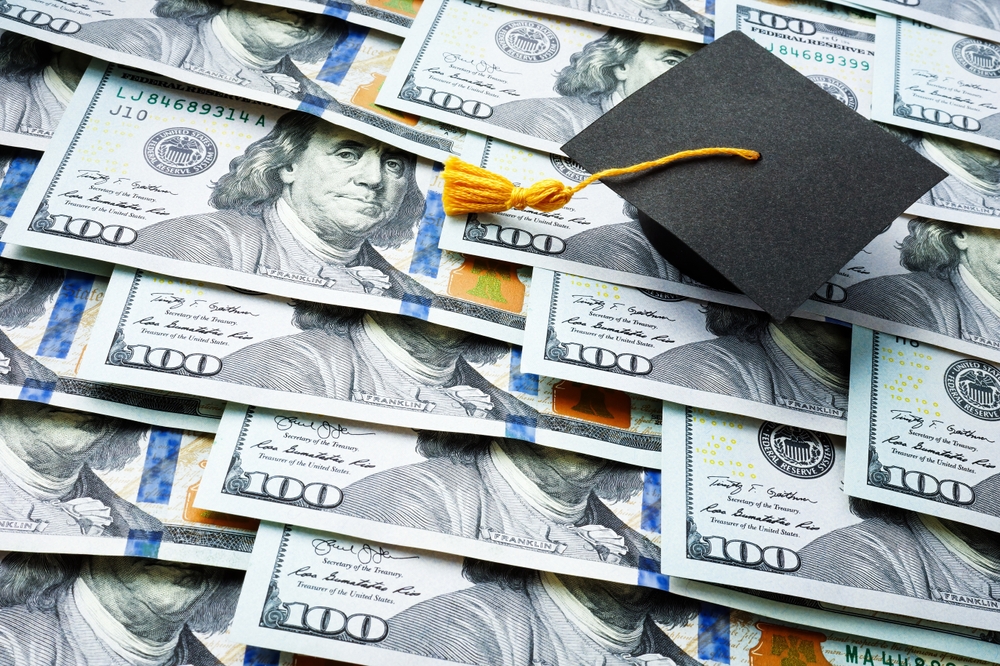New Student Loan Forgiveness Plan Offers Relief to Millions of Americans

Millions of Americans burdened by student loans are set to receive long-awaited relief following the Trump administration’s decision to reinstate and expand access to federal loan forgiveness. The move marks a significant shift in policy, reopening pathways to debt cancellation that had been previously paused due to legal and administrative challenges.
This development stems from an agreement between the White House and the American Federation of Teachers (AFT), which represents nearly two million educators and public service workers. The deal restores access to several income-driven repayment (IDR) programs, including the Income-Contingent Repayment (ICR) and Pay As You Earn (PAYE) plans, both of which allow borrowers to make affordable monthly payments based on income and family size. After a set number of qualifying payments, any remaining balance can be forgiven.
The decision comes after years of legal battles and policy reversals that left millions uncertain about their eligibility. For many, it offers not only financial relief but also clarity about their path to eventual debt cancellation.
The Legal Agreement That Changed Everything
The turning point arrived after the AFT sued the U.S. Department of Education earlier this year, alleging that officials had unlawfully blocked borrowers from accessing programs guaranteed under federal law. The lawsuit claimed that the administration’s decision to pause forgiveness under the ICR and PAYE plans violated the terms originally promised to borrowers.
Under the new settlement, the Department of Education will resume processing forgiveness applications for those enrolled in qualifying plans. The administration confirmed that borrowers who meet the necessary payment thresholds will not owe federal taxes on forgiven debt during the 2025 tax year.
Randi Weingarten, president of the AFT, described the settlement as a victory for borrowers who have faithfully made payments for decades. She noted that the agreement vindicates years of advocacy to ensure that educators and public service workers are not trapped by administrative errors or sudden policy shifts.

Who Qualifies for Loan Forgiveness Under the New Agreement
Eligibility for forgiveness depends primarily on the type of repayment plan a borrower is enrolled in and the number of qualifying payments made. The programs currently covered include the Income-Contingent Repayment plan (ICR), Pay As You Earn (PAYE), the Income-Based Repayment plan (IBR), and the Public Service Loan Forgiveness program (PSLF).
The ICR plan allows borrowers to pay a percentage of their discretionary income for up to 25 years, after which any remaining balance is canceled. PAYE offers a similar structure but limits payments to a lower percentage of income and forgives the remaining balance after 20 years. Borrowers under IBR can also achieve forgiveness after making consistent payments for two decades or more, depending on when their loans were taken out.

Public service employees, including teachers, nurses, and government workers, may qualify for earlier cancellation through PSLF after 120 qualifying payments while working full-time for eligible employers.
Mark Kantrowitz, a higher education expert, estimates that around 2.5 million borrowers are currently enrolled in either ICR or PAYE. Many of them could now qualify for forgiveness that had been stalled during the program’s suspension. The agreement requires the Department of Education to recognize prior payments made under these plans, even if borrowers had temporarily switched repayment programs during the pause.
The Phase-Out Timeline and New Repayment Options

While the reinstatement brings good news to millions, it comes with an expiration date. Under the administration’s broader education reform bill, often referred to as the Big Beautiful Bill, both the ICR and PAYE plans will be phased out on July 1, 2028. Borrowers who have not yet qualified for forgiveness by that date will need to transition into another repayment plan.
A new Repayment Assistance Plan, or RAP, will replace existing IDR programs for future borrowers. Those who borrow after July 1, 2026, will not be eligible for IBR, ICR, or PAYE and will instead be automatically enrolled in RAP or a revised Standard Plan.
For borrowers currently on track for forgiveness, payments made under ICR or PAYE will continue to count toward eventual debt cancellation, even after the programs are phased out. However, experts urge borrowers to document every payment and maintain records to ensure accuracy in future account reviews.
Nancy Nierman, assistant director of the Education Debt Consumer Assistance Program, advised borrowers to verify their repayment plan enrollment and confirm that all qualifying payments are correctly recorded. Errors or missing payment records have historically been among the biggest obstacles to achieving forgiveness.
The Tax Implications of Forgiven Student Debt

One of the most critical components of the agreement involves taxation. Normally, the Internal Revenue Service considers forgiven debt as taxable income. However, under this new policy, borrowers who have their loans canceled on or before December 31, 2025, will not owe federal taxes on the forgiven amount.
This exemption could save borrowers thousands of dollars in potential tax liabilities. The Department of Education clarified that if a borrower qualifies for forgiveness before the end of 2025, they will receive the tax benefit even if administrative delays push the processing date into later years.
After 2026, forgiven loans will once again be considered taxable income unless Congress extends the exemption. Financial analysts describe this as a temporary but important protection for borrowers nearing eligibility. Those who expect to qualify soon are encouraged to confirm their eligibility quickly to secure the tax benefit.
How to Check if You’re Eligible for Forgiveness

Borrowers can verify their eligibility by logging into their account at the Federal Student Aid website, studentaid.gov. Once logged in, select “My Aid” or “View Details” to review each loan and its corresponding repayment plan. Here are the key steps:
- Log in to your Federal Student Aid account using your FSA ID.
- Review your list of loans under the “My Aid” section.
- Check which repayment plan each loan is enrolled in. Only those in ICR, PAYE, IBR, or PSLF qualify under the current agreement.
- Verify your qualifying payment count. The Department of Education will automatically update these numbers as part of the reinstatement process.
- If you work for a qualifying public service employer, confirm your eligibility using the PSLF Help Tool on the same site.
Borrowers who have previously switched plans or requested to move into IBR to maintain eligibility can now remain in their current plans. Those who wish to cancel a pending transfer into IBR should contact the Federal Student Aid Information Center or their loan servicer directly.
Refunds and Processing Timeline
Under the new agreement, borrowers who made additional payments after meeting their eligibility for cancellation will receive refunds. The Department of Education has also committed to processing buyback applications for borrowers who no longer meet the partial financial hardship requirement, which was eliminated under the administration’s new legislation.
The settlement still awaits final court approval before becoming legally binding. Once approved, the Department of Education will be required to submit six monthly progress reports on the processing of forgiveness applications and program reinstatement.
Processing times may vary. Administrative backlogs and staffing shortages within the Department have been persistent issues. Experts advise patience and encourage borrowers to monitor official updates rather than relying on third-party sources or social media claims.

The Broader Impact on Student Loan Policy
The reinstatement of these forgiveness programs reflects a broader shift in federal student loan policy. It attempts to stabilize a system that has undergone numerous changes over the past decade. While the Biden administration canceled billions in student debt during its tenure, subsequent court rulings and policy revisions created uncertainty for millions of borrowers.
The Trump administration’s move seeks to provide short-term relief and legal clarity, while also setting the stage for a new repayment structure under RAP. Whether this marks a lasting reform or an interim fix remains to be seen. The 2028 phase-out date suggests that further legislative adjustments are likely in the coming years.
Higher education analysts note that the shift could reshape the financial landscape for younger borrowers. The gradual phase-out of existing IDR programs may reduce long-term forgiveness opportunities, placing greater emphasis on front-loaded affordability through capped payments under the new RAP structure.

What Borrowers Should Do Next
For those currently enrolled in qualifying repayment plans, the most important step is to verify account information and ensure payment records are accurate. Borrowers should also sign up for email notifications from the Department of Education to receive updates about forgiveness processing and policy changes. Experts recommend the following actions:
- Verify your loan servicer and ensure contact information is current.
- Download and save payment histories and correspondence.
- Avoid private companies that promise faster forgiveness or charge fees. The application process is free and managed directly through the federal website.
- Keep track of all official communications from the Department of Education or your loan servicer.
Maintaining detailed documentation can prevent disputes about qualifying payments and ensure that forgiveness is processed accurately once the Department resumes full operations.
A Step Toward Stability in a Turbulent System
For millions of Americans, this announcement represents more than a bureaucratic policy change. It offers tangible relief to borrowers who have spent decades making consistent payments without certainty of forgiveness. By reinstating the ICR, PAYE, and related programs, the administration has reopened a critical path toward financial stability for teachers, nurses, social workers, and countless others who serve their communities.
Still, the relief comes with caveats. Borrowers must act within the limited window, ensure accurate records, and remain vigilant as repayment programs evolve. The eventual phase-out of these plans underscores that federal student loan policy remains fluid and politically influenced.
As the court finalizes the agreement and the Department of Education resumes its processing, millions of borrowers may finally begin to see the end of a long and uncertain journey. The latest decision signals a return to consistency in a system often defined by unpredictability, offering a renewed sense of direction to those who have carried student debt for much of their adult lives.
Loading...

